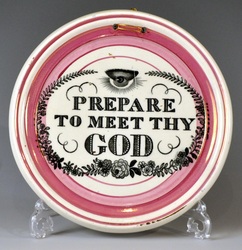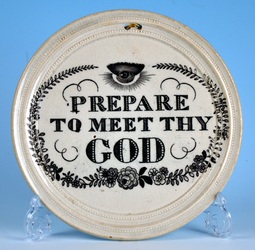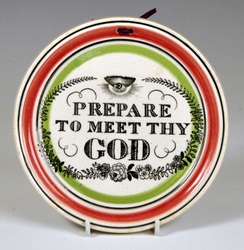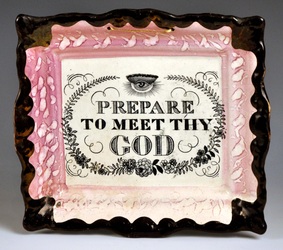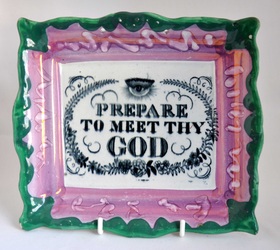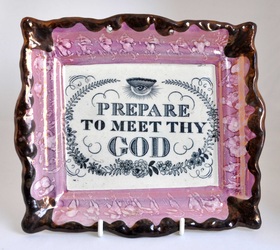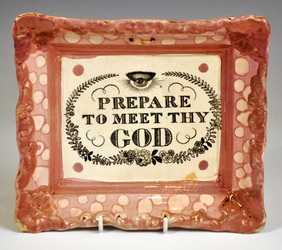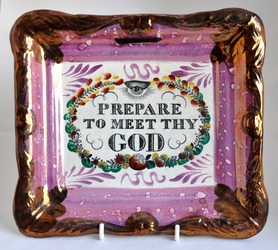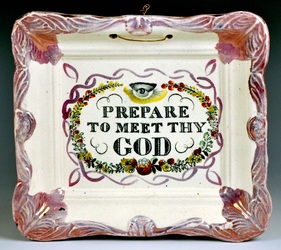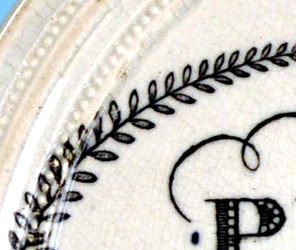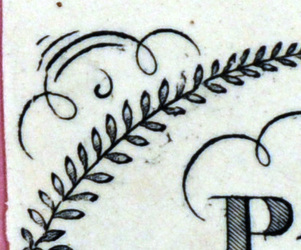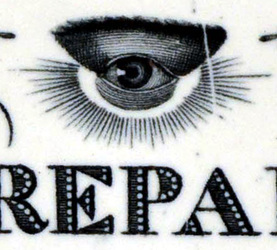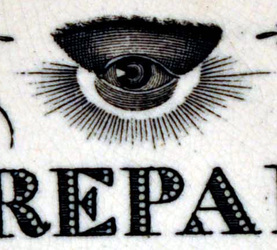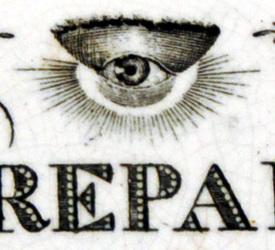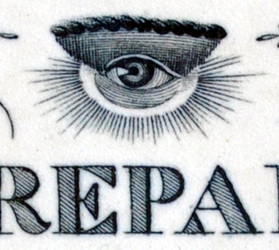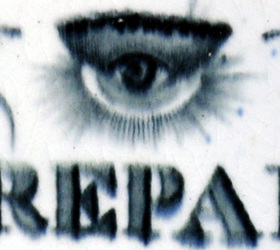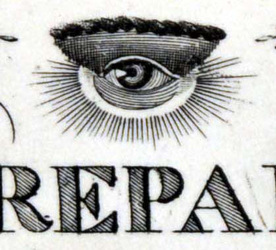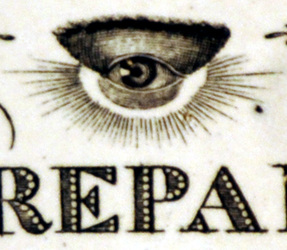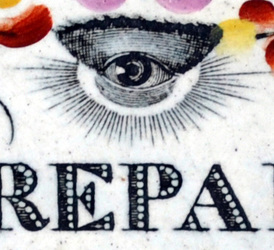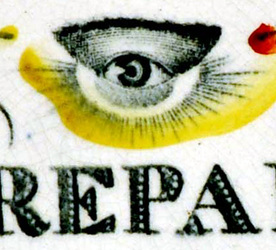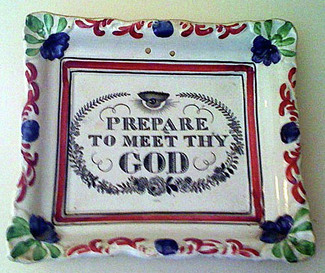|
I should have written this blog post months ago when I was sorting through the various 'Prepare' transfers. Below is a variety of plaques, about half of which I've attributed to Carr. The transfers in the second row have an obvious difference. In each corner there are twiddly bits (excuse me if I'm becoming too technical) to fill the rectangular frame. The left detail below is from row 1, the right detail from row 2 with the added twiddles. Another difference is that on the first and third rows, the letters of the words 'PREPARE' and 'GOD' are studded with rows of white pips. Below is a series of details, respective to the plaques above. So the twiddly bits in the corners weren't just added on. The transfers come from two separate copper plates. N.B. I've looked long and hard at the details on the first and third row, and they appear to come from the same plate. So who made the plaques? The bottom left plaque is the fly in the ointment. Maling used this plaque form from 1830s–1850s. It also appears with the printed mark B & Co, which Ian Sharp has identified as J Burn & Co from the Stepney Bank Pottery, Ouseburn, 1852–1860. Before remembering this plaque, I would have happily attributed the first row of plaques to Cornfoot, Carr & Patton, 1834–1847. But because we've no reason to believe the bottom left plaque is Carr, we've no reason to believe the first row of earlier plaques are Carr either. Incidentally, the first and third of the circular plaques are very chunky. Some of the Maling circular plaques are very thick too. And note that Maling also decorated their wares in green. But all of this is too tenuous to form the basis of a solid attribution. The second row of plaques seem likely to be Carr. N.B. these plaques appear with the 'LONDON' impressed mark. Of the list of potteries that used the London mark, Carr seems the obvious choice. In my July 31st blog post, I established a link between this 'group 2' plaque form and the larger plaques commonly attributed to Carr. So perhaps sometime around the 1860s Carr bought the transfer plate from the pottery that made the bottom left plaque, and used it to make the last two plaques. You can see now why I've put off writing this post so long. Clear as mud! P.S.The distinctive decoration of the plaque below (courtesy Adrian Harding) may one day help us identify the mystery pottery.
0 Comments
Leave a Reply. |
AuthorStephen Smith lives in London, and is always happy to hear from other collectors. If you have an interesting collection of plaques, and are based in the UK, he will photograph them for you. Free advice given regarding selling and dispersal of a collection, or to those wishing to start one. Just get in touch... Archives
February 2022
AcknowledgementsThis website is indebted to collectors, dealers and enthusiasts who have shared their knowledge or photos. In particular: Ian Holmes, Stephen Duckworth, Dick Henrywood, Norman Lowe, Keith Lovell, Donald H Ryan, Harold Crowder, Jack and Joyce Cockerill, Myrna Schkolne, Elinor Penna, Ian Sharp, Shauna Gregg at the Sunderland Museum, Keith Bell, Martyn Edgell, and Liz Denton.
|
